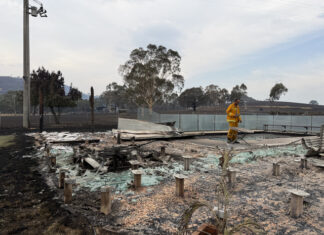I RECENTLY attended a meeting convened by the Cardinia Environment Coalition (CEC).
At the meeting the CEC sought to convey how it was adopting a risk management approach in managing bushfire safety and biodiversity objectives in the Beaconsfield Conservation Nature Reserve (BNCR) located at the Beaconsfield Reservoir. However, I came away from the meeting disillusioned with its (lack of) plans to meet those objectives.
This prompted me to look at the CEC Draft Management Plan (DMP). This plan should have been submitted to the DSE within two years of CEC’s appointment as managers of BNCR in December 2005. The DSE has the overarching responsibility of the BNCR.
The plan was submitted one year late in December 2008 and after a further one year in December 2009, the DSE has still not approved the plan. With the fire season now upon us, this is a distressing situation indeed.
The draft management plan states that, because of the close proximity of the BNCR to local residential areas, “there is a perceived need to conduct burns to reduce the risk of wildfire impacting on those residential properties”.
To this end, a small cool burn, prescribed (fuel reduction) burn, was conducted by the CFA in March 2007 – this is the only burn in the BNCR since the 1983 fires!
I would suggest that there is a real need to conduct further prescribed burns going forward, as reported in its own DMP of December 2008, which states that the CFA considered the south western section of the BCNR in need of fuel reduction.
However, resources to conduct burns are required and, judging by what was said at the meeting, resources do not appear to be available to CEC at this time. In addition, it is too late to implement for this fire season.
The big issue is that the DMP has a major conflict of interest as it openly talks about fire risk control being necessary but then states that the preference from all ecologists and fire ecologists initially consulted was not to burn.
Further, the DMP states that the CEC should “continue ensuring the width around the BNCR is mown according to botanical advice with adherence to exclusion zones, with slashing times scheduled to ensure flora species continue to thrive and weeds do not thrive”.
This area should also include the aqueduct road area from Dickie Road down to the BNCR. Unfortunately, this is not happening, as evidenced by the young saplings which are now over two metres in height in these areas and represent some two years growth at least. Previous managers of the reservoir maintained an effective slashed boundary and aqueduct.
As a local resident living in close proximity to the BNCR, I seek clarification from the CEC (or DSE) that some urgency will be placed on getting an effective fire risk management plan up and running and that implementation will occur before next year’s fire season.
David Moseley,
Officer.
Get the latest news to your email inbox FREE!
REGISTER




